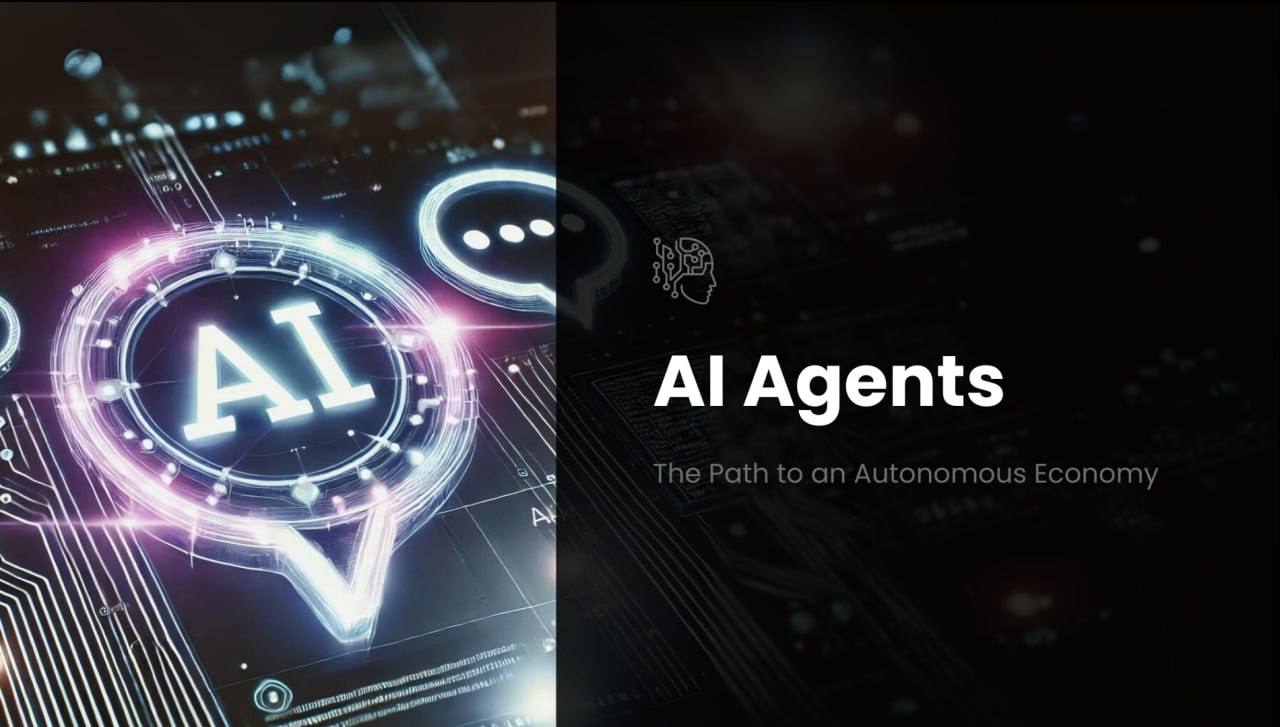From its conceptual beginnings in the 1950s, Artificial Intelligence (AI) has come a long way and has expanded its reach into general public use, cryptocurrency, and the emerging field of agentic assistance.
From digital robots to AI Agents, there is now a need to classify AI based on their capabilities. AI Engineers have categorized AI into 6 different levels starting from tools that operate based on simple rules and flowcharts to advanced systems that are capable of self development via training data.
In 2025, AI is settled at the middle ground of these levels and is poised for monumental progress. Particularly, we see sophisticated AI output such as image and content generation, and even passing the bar exam. This innovation has opened the possibility of AI agents handling more demanding functions such as becoming a public figure or influencer and even critical, risk-management tasks in finance like trading and asset management.
Categorizing the levels of AI Agents
In order to pave the way for growth, it is important to understand where we came from and what lies ahead for the future of AI Agents.
Level 1: Task-Specific AI
The agents under this category are built with definitive instructions which are optimal for simple tasks. Despite the limited capabilities, we already have seen how these simple agents have made day-to-day tasks easier. Applications like Siri, Sam, and Alexa have showcased how digital assistants can offload banal tasks such as calendar management to streamlining our lifestyle.
Level 2: Robotic AI Agents
Much like its predecessor, level 2 agents still operate on rule based settings as defined by a developer or administrator. These AI agents have found widespread use cases in the customer service sector. A common example for this are chatbots which operate on keyword association to be able to deliver relevant information to users instantly. This helps human agents to triage issues and also save manpower by letting robot agents handle basic queries.
Level 3: Smart AI Agents
With Smart AI Agents, we see a leap from plain structured process to utilizing state-of-the-art technology and computing. AI agents under this category handle tasks and interactions using Large Language Models (LLMs) to understand complicated inputs and prompts. OpenAI’s ChatGPT launched the era of Smart AI Agents being a commonplace tool for any task at hand. AI agents in this sphere can execute advanced tasks across different fields such as information technology, media and entertainment, and commerce. As we learned from its debut, there are still some limitations such as AI hallucination, which makes it susceptible to errors. This pitfall is mitigated by its adaptable framework as implemented by an administrator.
Level 4: Autonomous AI Agents
In the next stage of AI agents, we will start to see the ability to execute difficult tasks with little to no oversight from humans. At level 4, it is expected for AI agents to be able to generate new insights and ideas on how to approach a problem and carry out the necessary steps for resolution.
Level 5: Delegative AI agents
Level 5 acknowledges the limitations of the prior AI agents, one of which is that AI agents have variable success rates depending on the task. This means that some AI agents are effective in producing code but are weak in terms of cybersecurity. The novelty in this domain, therefore, is intercommunication with other AI agents. To execute a task, we will start to see multiple AI agents, specializing in different task categories, execute a project from start to finish.
Level 6: Expert AI Agents
Expert agents are those which are capable of evolving and making changes to their own framework without being audited by anyone. It is completely autonomous and inventive, removing the need for external communication with other autonomous AI agents, unlike the former model. In this arrangement, the AI agent will be able to create its own team of AI agents for optimal delivery, mimicking the safeguards of a peer-reviewed output.
These categories help us see a roadmap of AI agent development and what to expect in the future. However, it may not be advantageous for all organizations to adopt the latest technology, whether due to budget constraints or the specific needs of the institution. Therefore, it is also important to classify the types of AI agents.
Task-Input Agents
These agents are power efficient, as it may not require advanced computing and infrastructure. However, they are effective in carrying out a given task with virtually no errors.
Self-Governing Agents
In this example, AI agents will no longer need to be directed to a task but rather act automatically from real-time prompts such as meetings and standard operating procedures.
Commercial Agents
Deployed commercial agents are specialized for workflows that are profit-driven. It can range from active trading of assets, creating brand deals for companies and possibly making first contact with clients, and even managing traditional businesses.
The Future of the Agent-Driven Economy
The continuous progress in AI and computing power reveals the imminent period we are entering. In preparation, there is a need to map out the forthcoming changes.
As AI agents become autonomous, they are likely to accomplish tasks that open opportunities for generating revenue. We have touched on the capability of these AI agents to handle traditional finance activities such as trading and asset management but more importantly, we will see these agents launch new products and services in the market that address the market gaps and issues that are currently unresolved. Coupled with modern technologies such as blockchain, tokenization, and smart contracts, we see a future where AI agents are not only a tool for efficient task execution but also a space for income opportunities.
Tokenized agents exemplifies the setup of revenue sharing between AI agents and their stakeholders. Essentially, it is easy to imagine a world that benefits from AI agents’ profit-driven ventures all the while happening in a trustless and decentralized platform. Smart contracts also play a role in this arrangement where government bodies are able to ensure that the revenue generated by autonomous AI agents is properly taxed and accounted for.
As AI agents become more advanced, the communication between AI agents evolve into exchange of services that also provide taxable income for governments, effectively being able to produce another avenue of taxation from AI-exclusive endeavors.
Navigating the Roadblocks and Risks of AI
A great deal of optimism surrounds the modern developments of AI. The launch of Generative Pre-trained transformers (GPT) like Gemini, ChatGPT, and Deepseek showed the world not only its capabilities but also its risks in terms of information security. Commonly seen in interactive AI agents, security researchers and cybercriminals alike have proven how these systems are susceptible to jailbreak and hacking. As AI is capable of imitating humans, there have been a multitude of cases where these tools are used nefariously. Cases such as vishing (voice phishing), and social engineering have been more accessible to anyone and arguably more effective. Cybercriminals have effectively used these tools to imitate a relative seeking financial assistance during an emergency as well as creating an advanced form of “romance scam” where victims willingly send money to criminals that developed an online romantic relationship with the victim.
There is also the risk of AI giving misinformation to favor a specific goal or campaign. This risk can range from using generative AI tools to make impersonations of a public figure and encourage them to invest money into a fraudulent platform and also impersonating government officials with the goal of swaying the opinions of the masses to favor a specific movement or political party.
With AI being a common tool for research and information, it has also been proven that these tools can operate as a mouthpiece of disinformation ranging from fake news to historical revisionism.
These cases sparked a legal debate among lawmakers and regulators about the dangers of AI development. Ultimately, this may cause a setback in AI development by implementing regulations that will heavily guard the infrastructure that enables AI agents. As an example, AI systems may be restricted to ‘official use only’ and may be completely blocked from public use globally.
To mitigate these risks, we must ensure that regulators keep up with the rapid progress of AI technology and continually improve existing mandates within cyberspace so that AI development is not hindered. There also must be controls in place so that AI use is assured to abide by ethical standards and produce transparent logs that guarantee that the AI is trained on impartial data and information. Blockchain technology also alleviates these risks, by virtue of its immutability and traceable transactions. Blockchain may be integrated with these AI systems in order to ensure that these frameworks are unbiased and hold users accountable for its use.
The AI Zeitgeist
In recent years, the improvement of computing power shows that we are nowhere near the plateau of progress. The surge in exponentially efficient microchips suggests that we are at the beginning of a significant upward trend; therefore, we can expect advancements in AI creations and products across the board.
Text to image and text to video products shortly came after GPT technology. Capable of generating new content based only on user prompts, we saw how powerful AI is able to create appealing images and videos that can be used commercially. It is not short of drawbacks like being unable to consistently generate some human features but, with the rapid growth of AI, it is not impossible to imagine that these drawbacks will be addressed in the near future.
AI generated entertainment will soon be at par with what we see today. Music, movies, and books will be generated to accommodate the need for new content at a faster pace. Additionally, it may also provide us valuable insights from a third person perspective, as AI becomes a lot more perceptive and forms its own ideas of human interaction.
AI agents will also be more hospitable as we approach a future where AI is more humanlike than ever. This paves the way for more interactions with AI agents regularly and they may even be utilized for healthcare to provide mental and physical support while also ensuring the quality of care provided. Additionally, we envision a future where AI-powered robot agents will take on high-risk tasks, such as navigating burning buildings to assist human firefighters in saving lives. This may completely solve the trolley dilemma faced by the first responders in our society every time they are called into action.
The recent AI developments have already garnered mixed sentiments across the society. Some see a bleak future where AI replaces rank and file the employees of the world and some are hopeful that AI is the innovation that will propel our society forward into other meaningful, grand endeavors. Whether you see a future where the risks are amplified or a future of new possibilities, it is without a doubt that AI will play a much larger role in our daily lives in the coming years.

